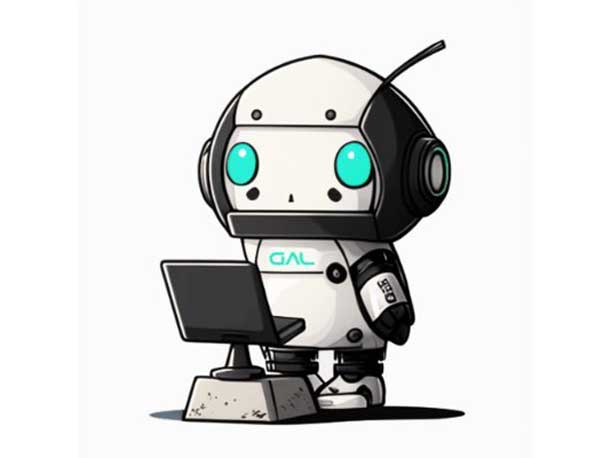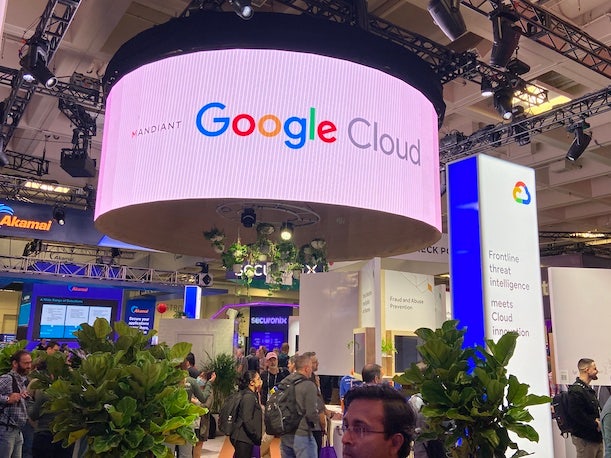Google Cloud Partner Cloudsufi On ‘Exciting’ Generative AI Innovation Lab
‘Generative AI is not just a tool, it’s a thought process. It’s a mindset. And with that mindset, people will start changing,’ says Cloudsufi CEO Irfan Khan.

Fast-growing Google Cloud partner Cloudsufi is surging to be at the forefront of generative AI with unique solutions and use cases as the company establishes a new Generative AI Innovation Lab powered by Google Cloud.
“Generative AI is not so exciting when you say, ‘Just tell me a topic and I’ll give you a whole page of information,’” said Irfan Khan, president and CEO of San Jose, Calif.-based Cloudsufi. “That’s OK. It’s good people are getting used to it.”
“But when we use it, for example, for autonomous supply chain around how do we make the company more powerful by making [autonomous] decisions based on structured and unstructured data, based on trends which we humans would have taken years to do it—that’s powerful,” Khan said.
[Related: Google I/O: 8 Huge AI, Workspace, Bard, Google Cloud Launches]
New Generative AI Innovation Lab
Cloudsufi recently partnered with Google to launch a new Generative AI Innovation Lab with a capacity of over 500 qualified AI professionals focused on empowering enterprises to build and leverage generative AI solutions.
The combination combines Google Cloud’s generative AI, data analytics and machine learning with Cloudsufi’s data-driven solutions aimed at empowering autonomous enterprises.
“Generative AI is not just a tool, it’s a thought process. It’s a mindset,” said Khan. “And with that mindset, people will start changing.”
The CEO said the goal is to close the gap between human intuition and data-driven decisions. The lab is focused on building solutions around supply chain modernization for specific industries to improve top- and bottom-line financials as well as mitigate risk for enterprises. Customers will leverage AI models that analyze data from various sources including sensors and social media to identify patterns, optimize inventory and deliver sustainability.
The AI models are based on technologies such as Generative Adversarial Networks (GANs), Variational Autoencoders (VAEs), Google PaLM, LaMDa and Transformer, capable of generating realistic data and app-building by simulating complex scenarios, including structured and unstructured data like code, text, image, dialog, audio and video.
Khan has decades of executive IT experience. He was previously CEO of AI application services company Bristlecone before taking over the reins at Cloudsufi in 2019. In an interview with CRN, Khan explains his company’s generative AI strategy and Google Cloud’s partner vision for AI.

What’s your strategy in generative AI and the new Generative AI lab?
We invested in 500 talent resources and built a lab for generative AI. The purpose of the lab is to make sure we come with innovation to different industries and monetize their data. Some of the corporations who want to monetize their data don’t have a clue what the three or four steps down the road are needed to actually realize data monetization.
What we’ve done is we have state-of-the-art people right now who have exemplary experiences around supply chain and data. And now they’re getting trained on generative AI. To me, generative AI is not just a tool, it’s a thought process. It’s a mindset. And with that mindset, people will start changing.
For example, right now they’re just using the tools and a lot of excitement is going on. But what we’re trying to do with the Google platform right now is to give them actually real-life scenarios, which goes beyond that excitement of, ‘This can produce a document which would have taken five days to produce. I can produce it in 30 minutes.’ That’s just a very basic use case for people to get used to it.
But it’s about, ‘How do corporations becomes autonomous? How does the supply chain become autonomous by using structured and unstructured data, and find the meaning between that gap? So it’s pretty exciting for us.

Give me one generative AI use case that isn’t just, ‘produce a document or information for me quickly.’ What’s a unique customer challenge you’re solving for?
One of the largest conglomerates out of the Middle East right now wants to use this ability to really predict the future of their employees in the company. It’s an absolutely brilliant use case.
So they are able to do pattern recognition in terms of the behavior of an employee, and how they can predict or be more cognitive about career road maps for their people right now.
For them, the people are a big talent. They feel they haven’t really done well in terms of promoting the people or lining up different capabilities.
We’re going to go deeper with them. From the time somebody joins in, it’s also part of their interview process right now to do that. And within a year … the data on the behavior on the decision-making and interaction of people allows us to actually either train or divert themselves to their best area.
We all want to be somebody and they’re going to move this to the leadership team as well to make sure they’re producing the right leaders for the future. It’s a very interesting use case that’s not commonly discussed.

How is Google Cloud helping you innovate around generative AI?
Besides access to the technologies and tools, which we’re using to produce these use cases across industries, Google is [putting] partners [at] the front end of this to solve the problem for our customers.
In our past lives, we’ve worked with different cloud hyperscalers, but what I enjoy about Google right now is they’re able to have the partner lead and bring in the use cases.
So we have access to the technologies at Google. We have access to the engineering at Google. We have access to product management at Google. We’re able to have a conversation with them. We are able to have a brainstorming session with them.
The nice thing is, Google is very clear about the fact that they’re going to be very successful if their ecosystem is successful, which means their partners should be able to lead them in a lot of these use cases, compared to them saying, ‘Oh, we’re going to create everything ourselves.’ That kind of innovation mindset is coming from Google with all its technical stacks accessible to us.
Google likes to give a platform for a growth company like ours, saying, ‘These guys could do a fantastic job.’ So that allows you to have a playground of doing these variable POCs or different kinds of POCs.

Where are there opportunities in generative AI right now? What’s your generative AI plan for the next year?
Of course there’s areas around supply chain where we can make predictions in terms of inventory, optimization or logistics to be much more predictable between different warehouses and different geographies. That’s more of taking forecast accuracy to the next level.
But the exciting part is what they’re doing with the workforce. Where generative AI should be able to recognize the gap between the thoughts managers feel about the person versus what that person can realize. It can reduce the gap. It can predict, ‘This might be three or four options that you want to discuss and then coach them on what they can do.’
We always knew the first reaction would be, ‘OK, how do we reduce the cost, increase sales, reduce the risk, optimization, etc.’ But making humans more happy in their workforces by telling them what they don’t know, and making them recognize their own patterns—it’s pretty powerful.
Everybody is liking the concept of generative AI, but they’re also thinking, ‘OK, how do I use it besides the fun uses we see right now?’
So we’re looking at six industries, five top applications in the industries, three use cases into those industries, and then we go, ‘How do we show value of generative AI in those use cases?’ That’s the holy grail for us. And that’s the plan for us for the next 12 to 18 months.